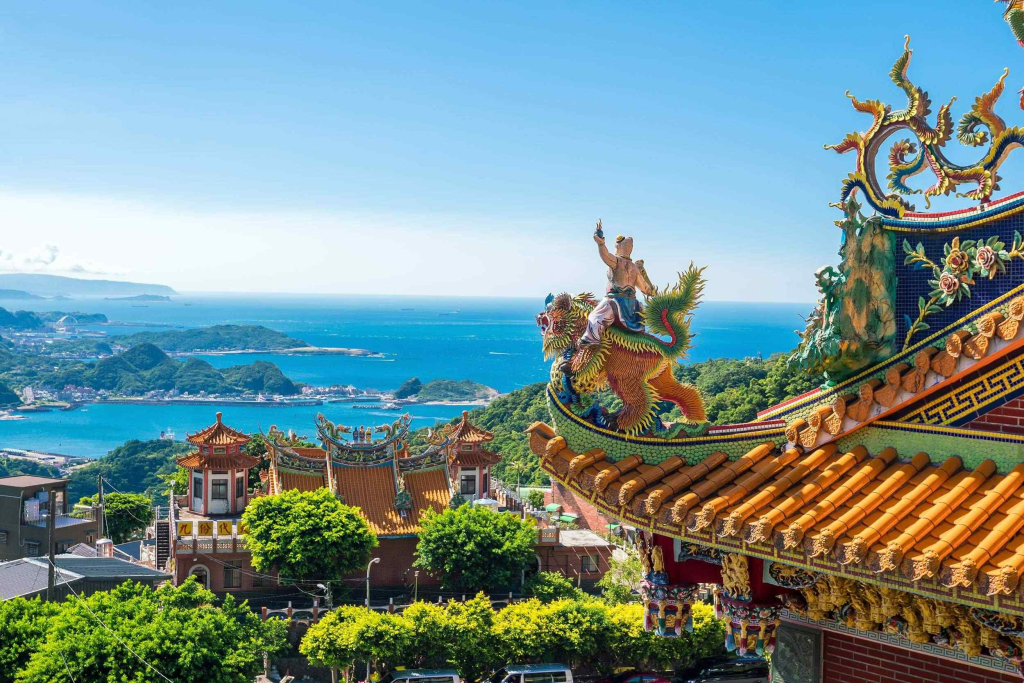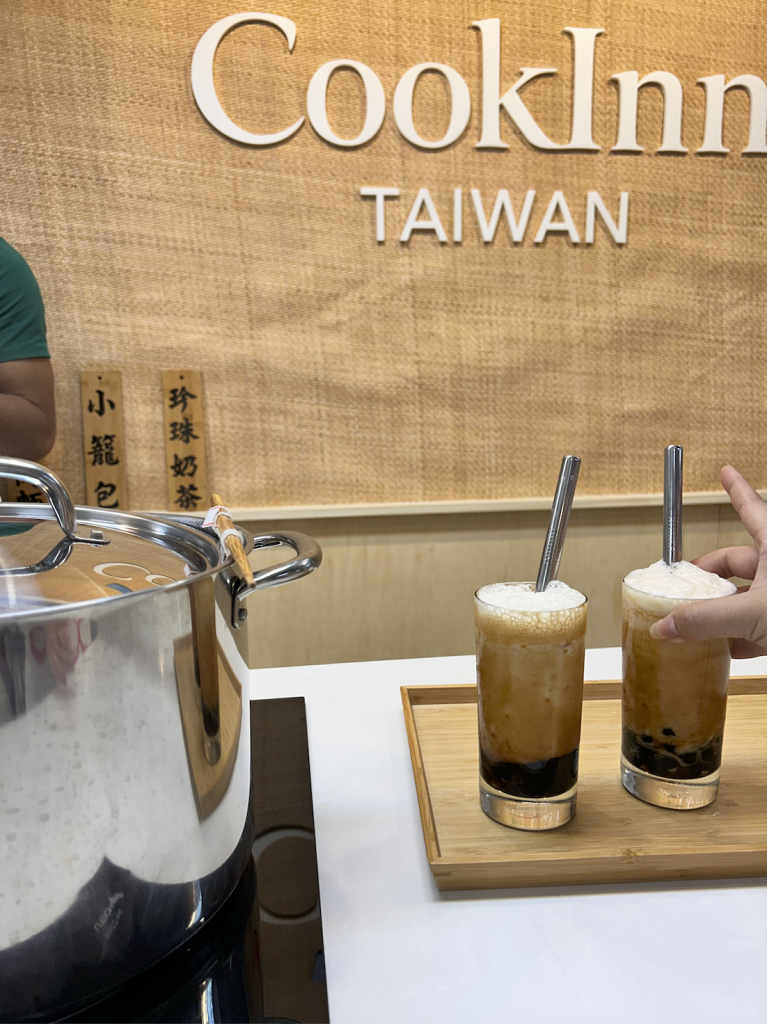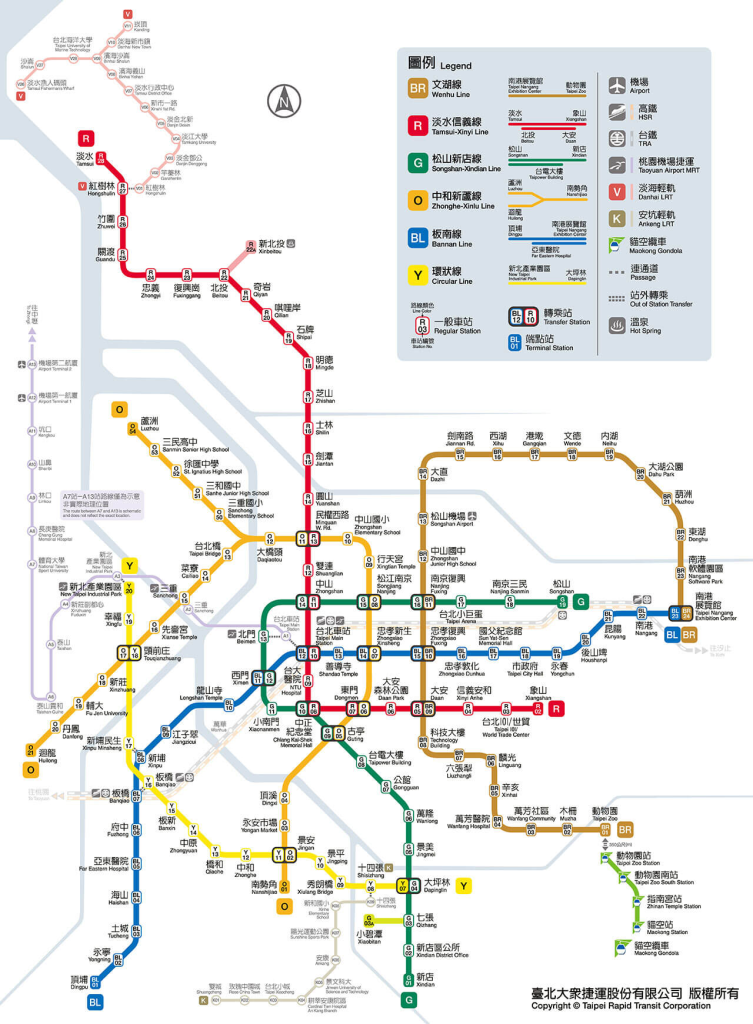Prompt 1: This program pushed me to move beyond observation and into participation. At the beginning, I was primarily focused on seeing Taiwan as a cultural experience something to learn about from the outside. But over time, my perspective evolved. I started to realize how interconnected identity, history, and daily life are here. Talking with monastics at Fo Guang Shan, for example, made me rethink what it means to live with purpose. Visiting the 2/28 exhibit challenged me to think more critically about political memory and resilience. And even learning to make boba from scratch taught me how much tradition exists in what might seem like everyday routines. I became more aware, more grounded, and more open to complexity not just in Taiwanese society, but in how I view my own.

What will stick with me beyond Taiwan was how everything here including food, faith, memory, architecture is connected. Visiting the Buddhist site at Fo Guang Shan, for example, I learned that spirituality can be embedded in comfort and accessibility as well as give comfort to not only conformats of that religion but businesses as well. Speaking with female monastics changed my perspective on purpose, simplicity, and how faith functions in modern life. The monks represent real world change over time as society had started to progressively imbed women into traditions more frequently. And lastly, the 2/28 Museum made me confront how governments handle memory and public accountability. This trip helped me become more patient, more reflective, and more aware of the ways that cultural experiences challenge your assumptions.

One of the biggest personal growths for me was in how I started to be more comfortable navigating a foreign country alone. Early in the program, I was nervous about travelling alone Taipei figuring out subway routes, getting off at the right stops, and communicating with locals in unfamiliar situations. But after a few solo trips, including one where I had to find a place I’d never been before with just a map written in Chinese, I started to feel more confident. I also quickly realized that Taiwan is very safe and locals here are also really friendly so after a few days I was able to do it on my own. This was less about getting from point A to point B and more about realizing I could handle being uncomfortable ending up at the wrong places and still not feel lost.

That sense of independence helped me engage more deeply with the culture. When we visited places like Fo Guang Shan, I wasn’t just thinking, “This is different” I was thinking, of how every experience connected to tradition and culture in their own ways and I started reflecting more on how different systems of meaning and value shape people’s lives. By the end of the trip today, I feel more capable, more curious, and more grounded.
Prompt 2:
Before coming to Taiwan, I had a general idea about its geopolitical importance, but I didn’t fully grasp how deeply connected Taiwan and the U.S. are. Our visit to AIT (American Institute in Taiwan) really brought that to life. Hearing directly from a U.S. representative about how Taiwan despite being about the size of Maryland is one of America’s top trading partners helped me realize how much influence a small country can have. Taiwan’s role in the global tech economy, especially through its semiconductor industry, is massive. That relationship is not just strategic it’s essential to both countries’ economic futures.

The visit that deepened my understanding of Taiwan’s current identity was learning about its past at the Chiang-Kai shek memorial hall. In 1949, after the Communist Revolution in China, around two million people, many of them officials, military personnel, and civilians loyal to the Nationalist government, fled to Taiwan. They brought with them not only leadership and infrastructure but also a very different political and cultural framework than what was taking shape under communism in mainland China.
That migration was a turning point in Taiwan’s history and it’s still controversial. Some people here support Chiang Kai-shek, for resisting communism and preserving a version of China’s pre-revolutionary culture. Others resent him, especially for the authoritarian period that followed, including the White Terror, where political dissent was harshly punished. It’s clear that Taiwan is still actively working through that legacy, even as it shapes its modern democratic identity.

The AIT visit helped connect these threads for me past and present, domestic and global and made me think more deeply about the complexities of international diplomacy, how economic cooperation and cultural relationships are intertwined, and how countries like Taiwan constantly balance their history with their global role. This experience also helped me see international work not as abstract theory but as more real, layered, and people-driven which has made me more interested in fields that involve cross-cultural communication, education, or policy.
Prompt 3: One of the most memorable and insightful experiences on the trip was visiting Fo Guang Shan, the largest Buddhist monastery in Taiwan. Before arriving, I expected it to be strictly a religious site focused on worship and rituals. But once we were there, I realized that Fo Guang Shan is much more than a temple and it’s a complex, living example of how spiritual tradition, public education, cultural outreach, and modern business strategy can all coexist under one philosophy.

What stood out immediately was how intentionally the entire space was designed it was peaceful, but also welcoming, accessible, and engaging for people from all backgrounds. There were exhibits, tea shops, vegetarian restaurants, gift stores and Starbucks. The guides said the purpose of this was to make people feel more welcomed. The idea is they would have food or drink and then explore the Museum not having to leave if they got hungry. It didn’t feel commercialized it felt like a well-thought-out effort to meet people where they are. The idea seemed to be that if you want to introduce Buddhist values to the modern world, you have to make those values visible, accessible, and integrated into modern life.
We also had the opportunity to speak with female monastics, which added a powerful human layer to everything we were seeing. They spoke about how Buddhism at Fo Guang Shan is not just about personal enlightenment, but about bringing peace, clarity, and compassion to the broader public. Their emphasis on inclusion and public service especially through things like art, writing, and cultural preservation gave me a new appreciation for religion as a force of community development, not just personal belief.

In that sense, Fo Guang Shan operates almost like a non-profit cultural institution and a religious organization at the same time. It uses tools like branding, hospitality, and storytelling not to make profit but to sustain its mission and broaden its reach. I was impressed by how it used modern marketing practices (like consistent visual design, thoughtful visitor experience, and international partnerships) to promote ancient values in a contemporary world.
Seeing that helped me understand that in Taiwan, religion isn’t pushed to the margins or locked into tradition. It adapts, evolves, and remains central to society not just spiritually, but socially and even economically. Fo Guang Shan was a reminder that modernity and tradition don’t have to cancel each other out but they can actually amplify each other.
I came in with curiosity and a general understanding of Taiwan’s global role, but I’m leaving with a much deeper appreciation of its complexity, resilience, and significance. From navigating the subway alone for the first time to having conversations with Buddhist monastics, I was constantly learning. This experience didn’t just change the way I see Taiwan. It changed the way I see global relationships, cultural values, and my own potential to be part of international conversations. Whether it’s through education, communication, or religion, I now feel more motivated to pursue work that brings people and ideas across borders together.
